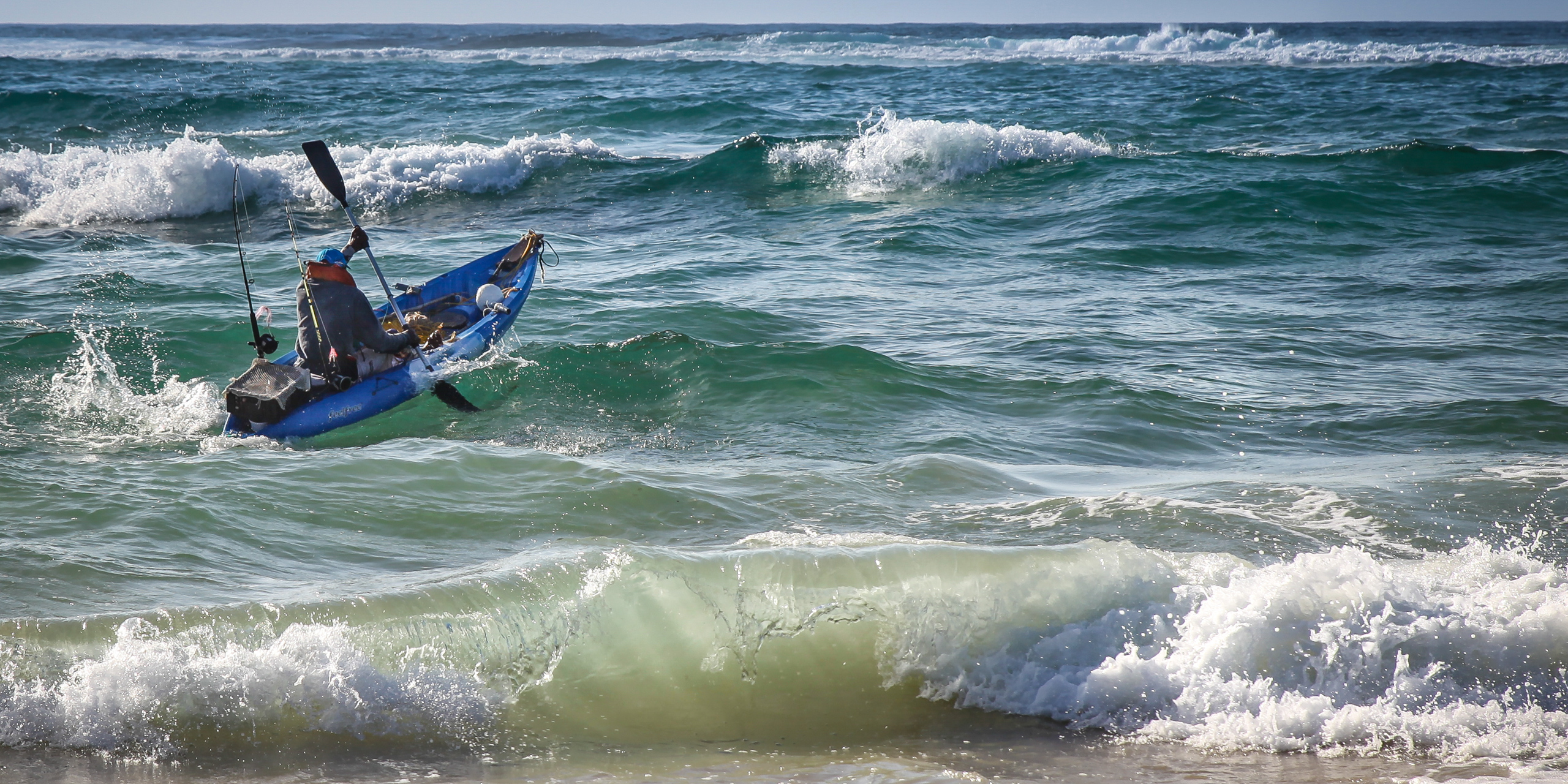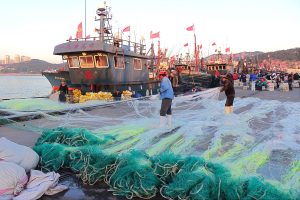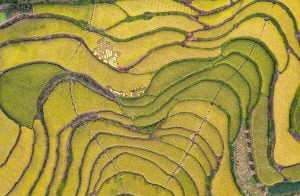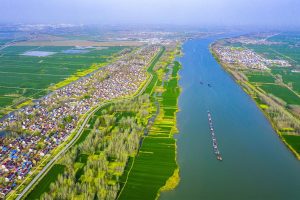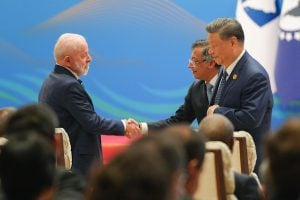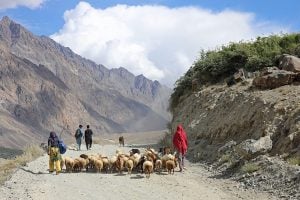Francesca Trotman’s connection to Mozambique began in 2013 on a diving trip which took her to Jangamo, Mozambique. An avid diver and underwater photographer, she was captivated by the south-east African country’s marine life. But her excitement turned to dismay when she witnessed sharks being killed in local fisheries, some caught deliberately for their valuable fins.
“I saw many sharks being killed,” Trotman tells Dialogue Earth. “So, I decided that I wanted to understand more about the shark fisheries in Mozambique. Sharks were my primary interest at the time, and the animals that first got me interested in marine biology.”

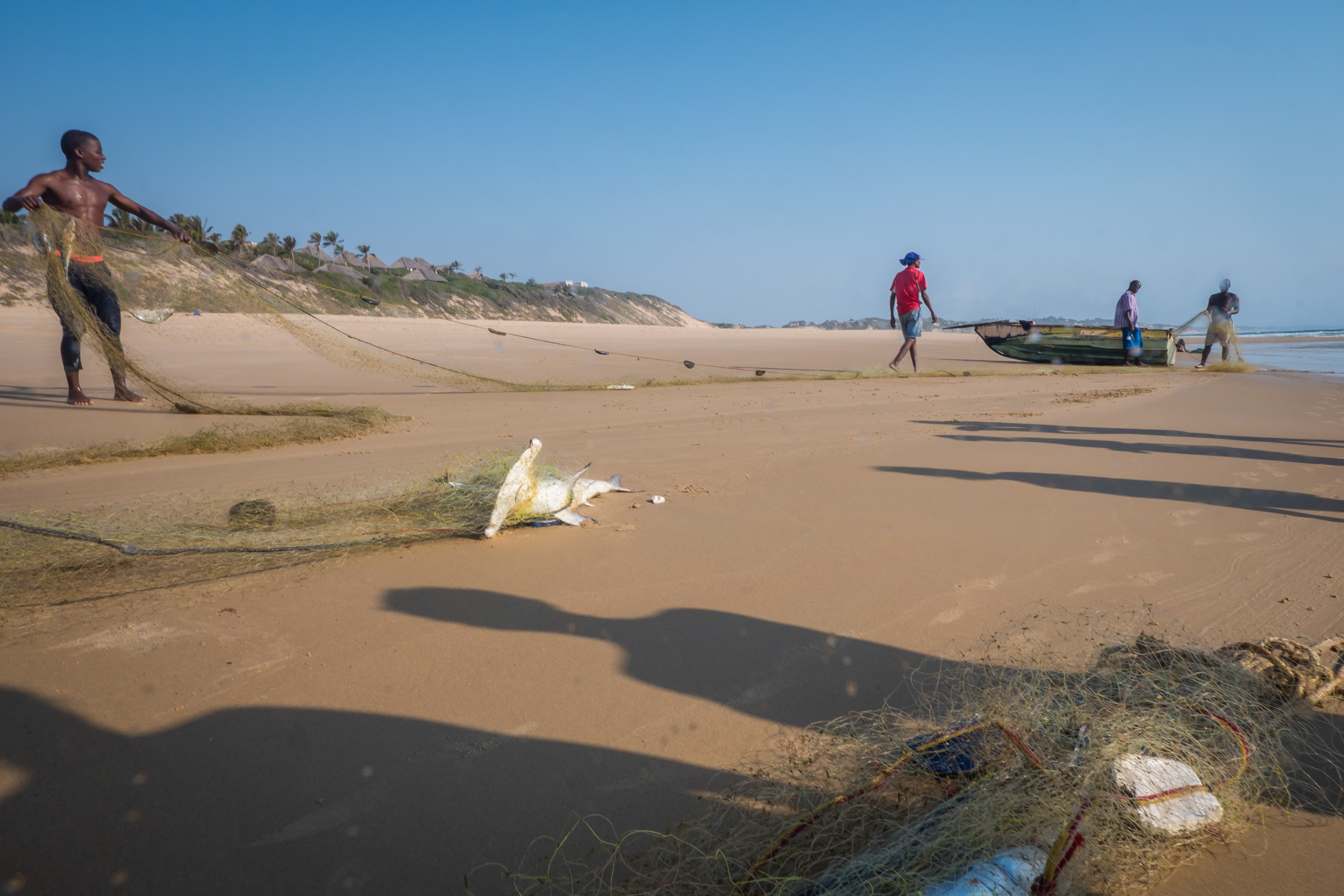
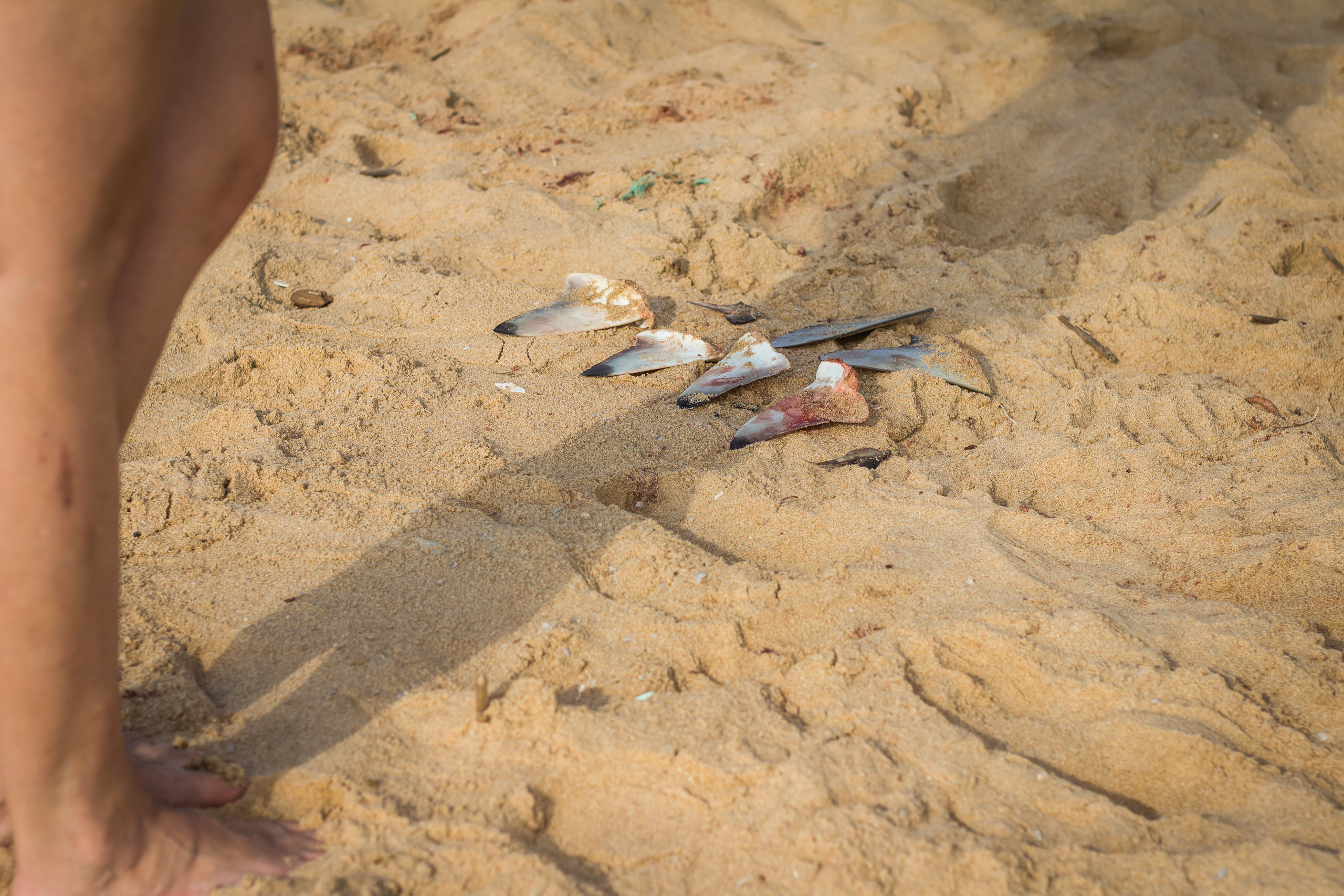
Mozambique hosts a huge diversity of marine animals, and its waters are home to over 140 different species of chondrichthyans, the class of fish that includes sharks, rays and other closely related animals. Jangamo itself is listed by the International Union for the Conservation of Nature as an “Important Shark and Ray Area”.
Information on the catching of these animals is sparse, but research and anecdotal evidence suggests many are taken accidentally in nets by local fishers and caught by foreign vessels off the country’s coast.
Trotman returned to the country from the UK, where she was studying marine biology at the University of Southampton, in 2014 to conduct research as part of her master’s degree on the sustainability of fisheries in Jangamo Bay, a picturesque coastline in south-east Mozambique known for its tropical marine life. What began as a personal quest quickly evolved into something much larger.
In 2015, Trotman founded Love The Oceans, an NGO dedicated to marine conservation and helping the local community in the bay. A decade later, the organisation has become an integral part of the community, setting up coral reef monitoring, encouraging sustainable fishing practices and improving ocean literacy and gender equality.

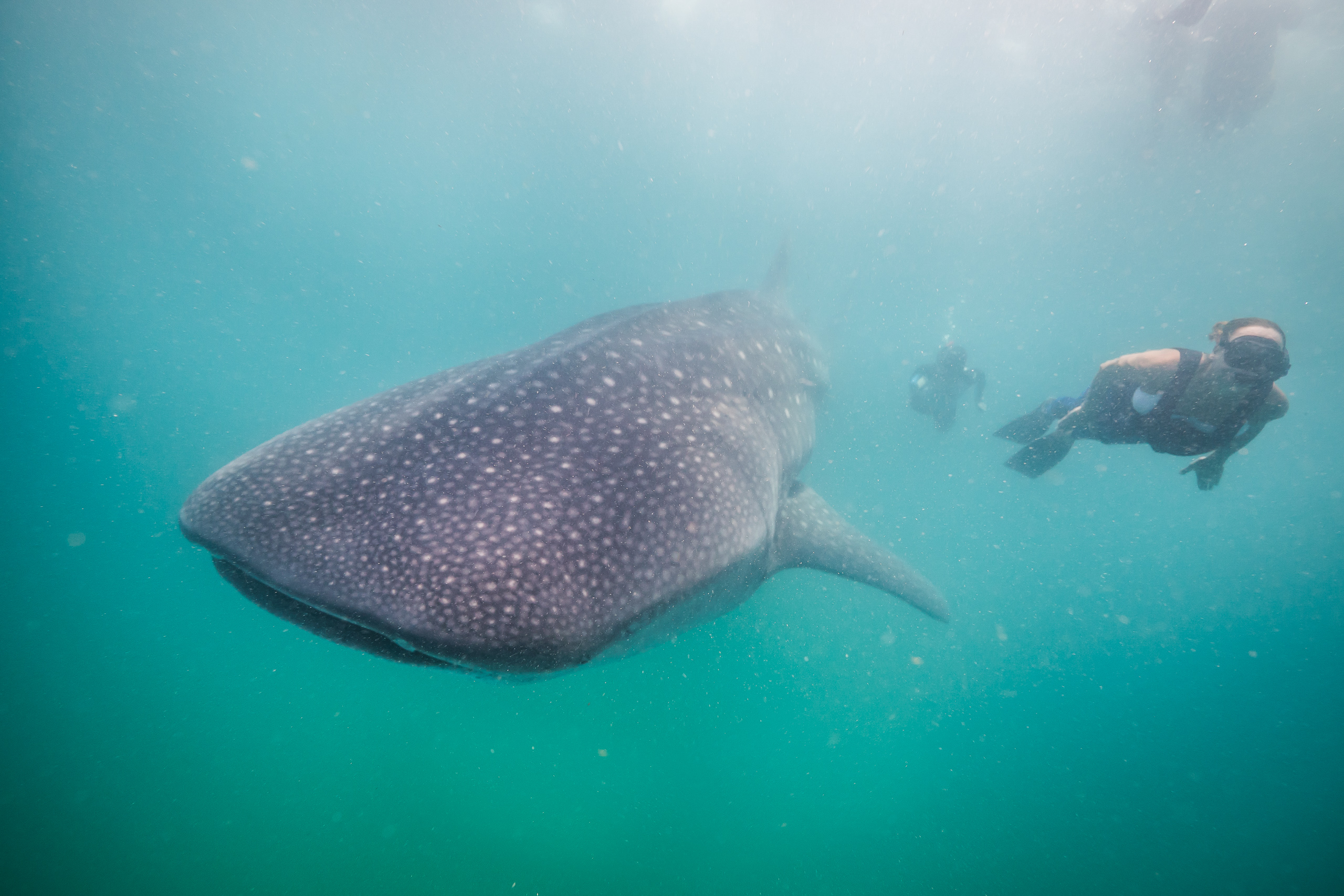
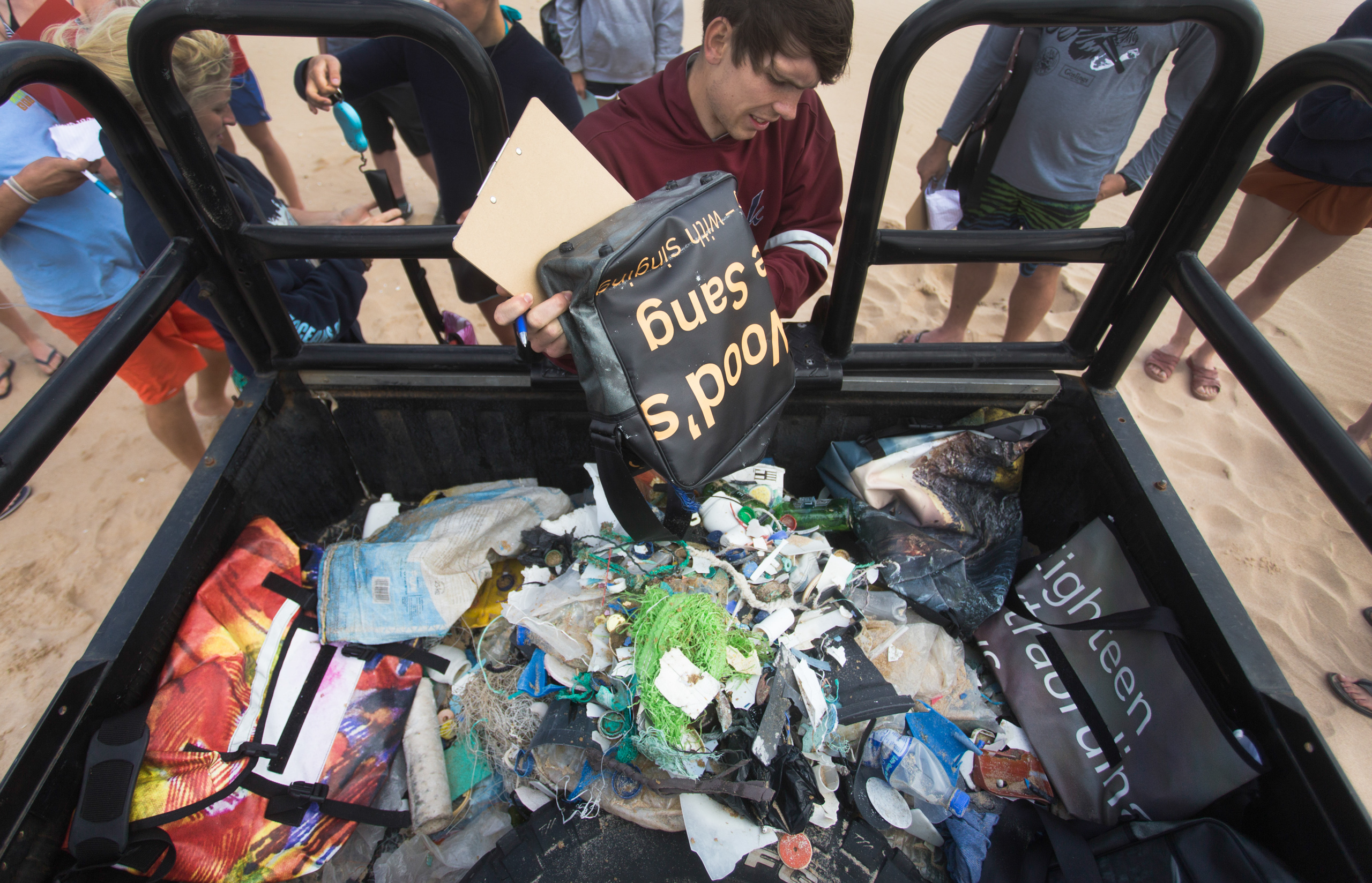
Community-driven conservation
Trotman says community engagement is what distinguishes Love The Oceans from many other conservation projects, as well as a recognition that conservation needs to be linked with local livelihoods.
“A significant part of our work focuses on understanding the socio-economic impact of fisheries. We take a holistic approach to conservation,” Trotman explains.
“To do this effectively, we need to be deeply embedded in the local community. The majority of our team consists of local community members, which fosters a genuine, personal connection to the ocean and the work we do.”
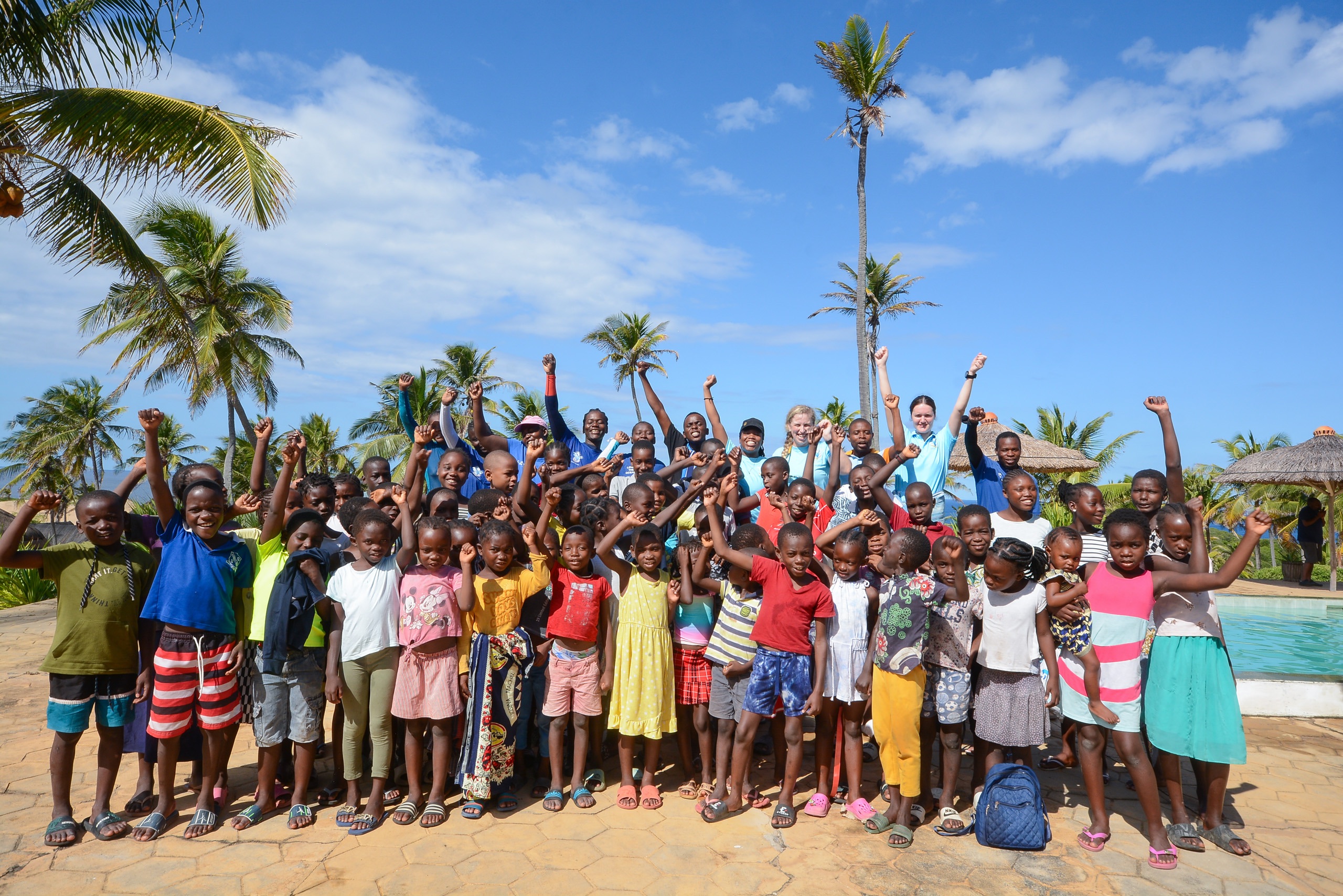

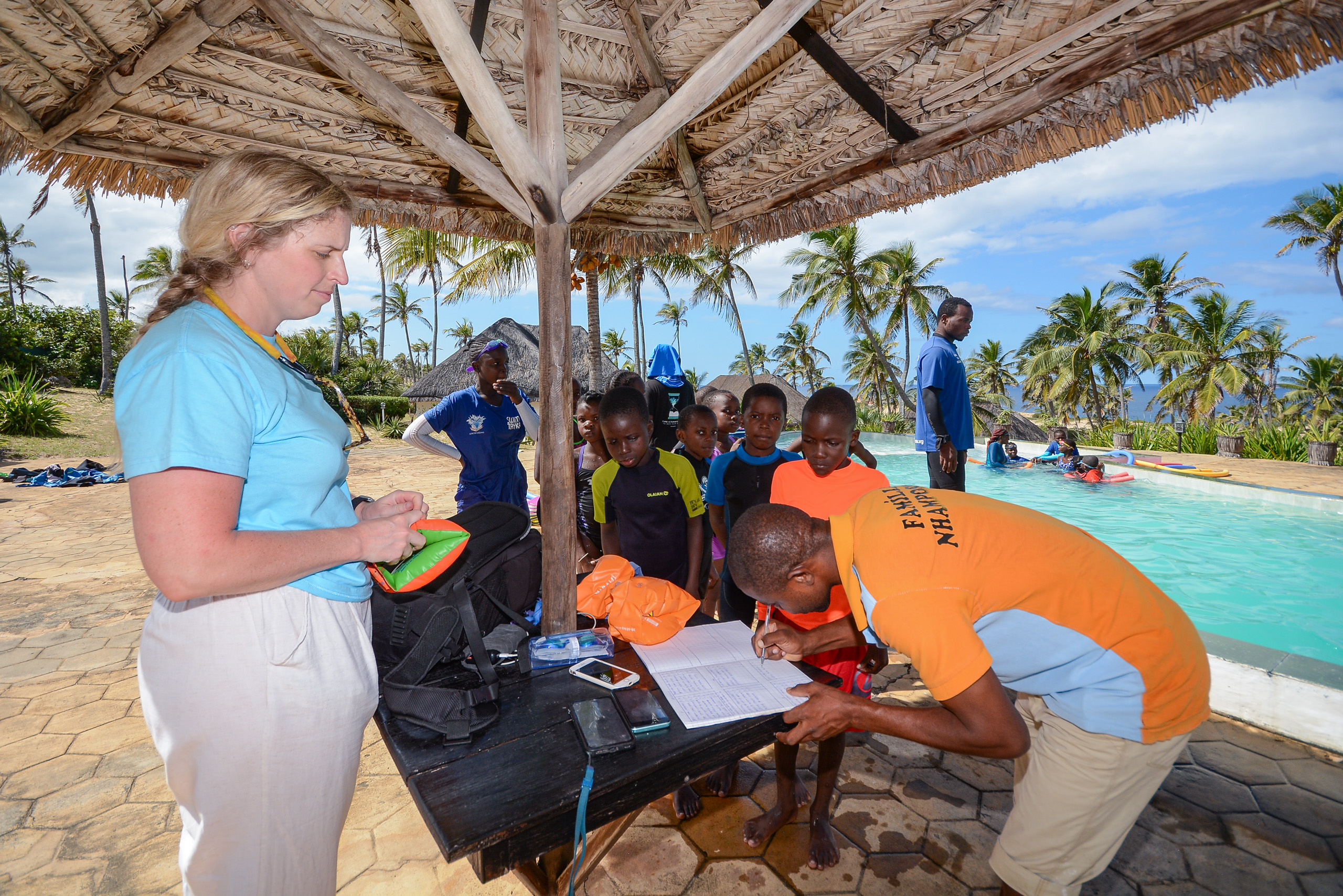
This connection is at the heart of how Love The Oceans crafts its conservation strategies. Yudmila Chunguane, a marine biologist who works for the group, points to its sustainable fishing project as a prime example. Love The Oceans conducted an extensive consultation with local fishers and the community fishing council on sustainable practices. Chunguane says kayaks emerged as a more sustainable alternative to deploying gillnets in the NGO’s research; using these nets results in high levels of bycatch, including herbivorous fish, sharks, dolphins and even juvenile humpback whales.
Monofillament gillnets are a type of plastic fishing gear designed to hang in the water and catch fish by their gills as their heads pass through the net. These nets are widely used and valued for their efficiency by small-scale fishers in the Global South: they are low effort but catch many marine animals.
But gillnets can also inadvertently catch marine mammals, seabirds, turtles and non-target fish. Conservation groups have often lobbied against their use around the world.
“This collaboration led to the launch of our sustainable fishing project, where we provided kayaks and sustainability education to fishermen to transition from net fishing to kayak fishing,” Chunguane explains. To date, the group has supplied 32 kayaks, and the equipment needed to fish from them.

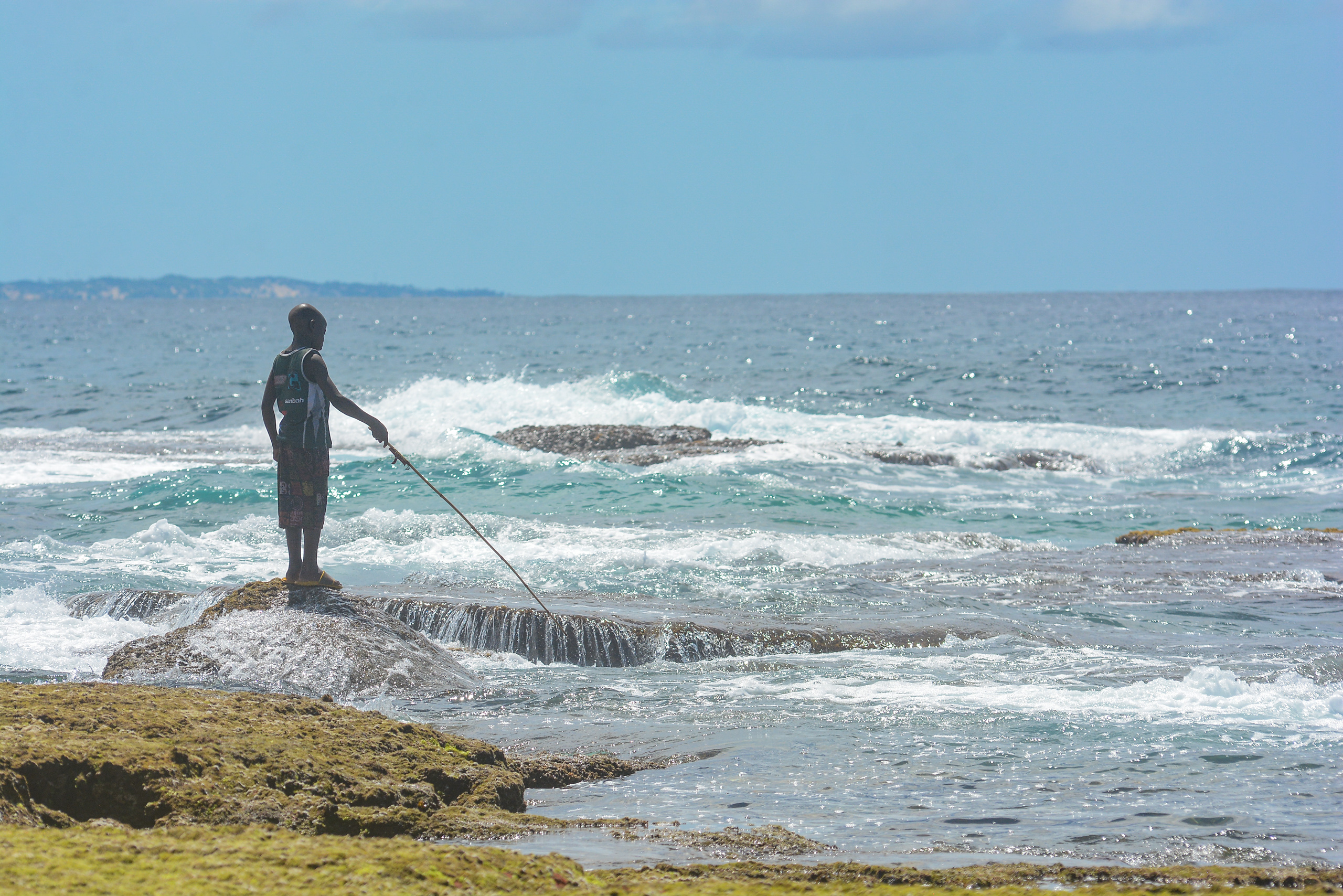
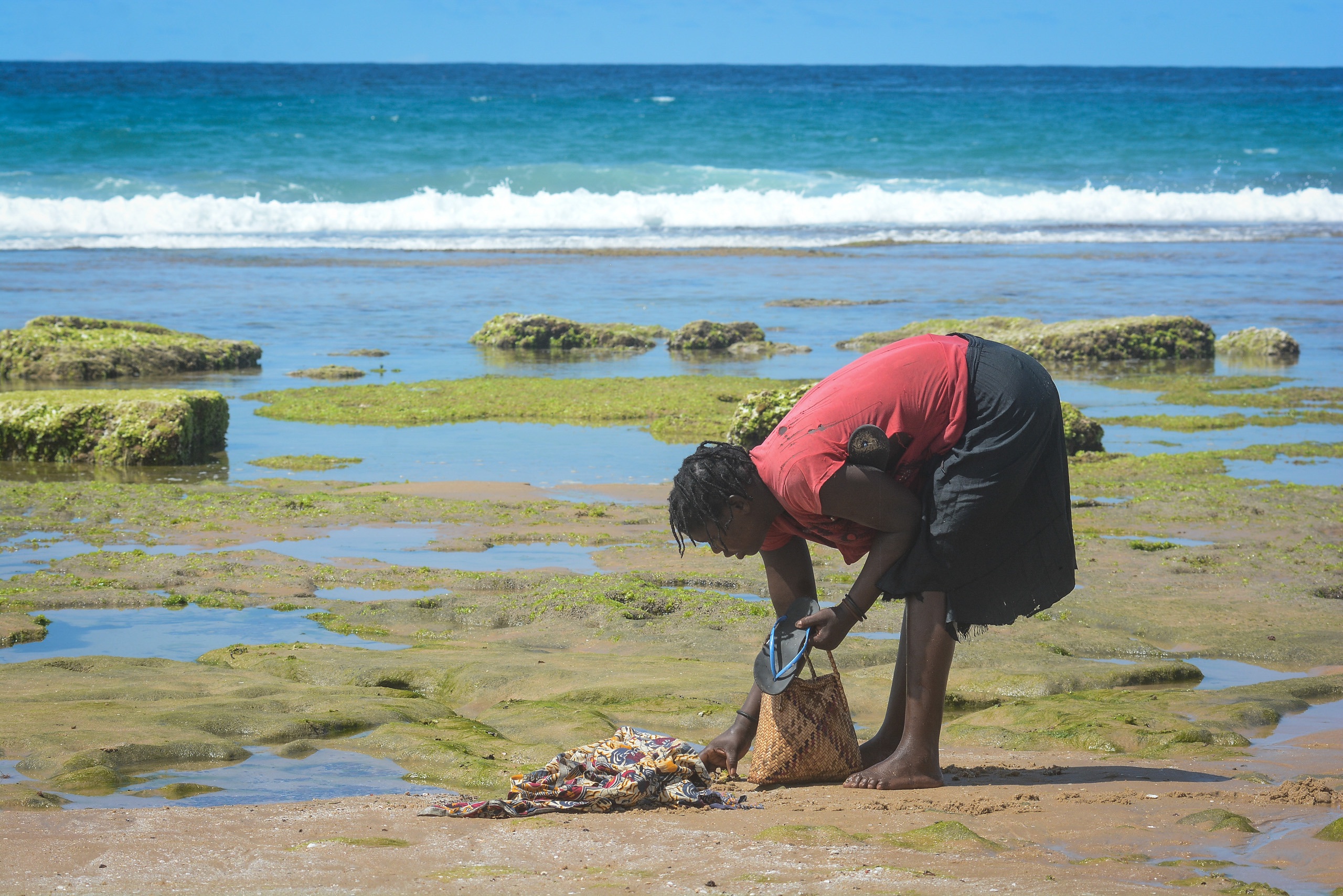
“Anything that swims into [gillnets] is a goner,” says Trotman. But progress in ditching them has been slower than anticipated. Again, knowledge of the local situation – especially its economics – is vital to understanding why.
“There’s a couple of fishermen that own all of the nets in the area, and they employ people to run those nets,” Trotman explains. “They don’t want to give up their nets, because they don’t have to do much to get a slice of the profits. This is why holistic conservation has a lot to do with human behaviour change, informed by science.”
To overcome this hurdle, Love The Oceans is employing a two-pronged approach: storytelling and economic incentives.
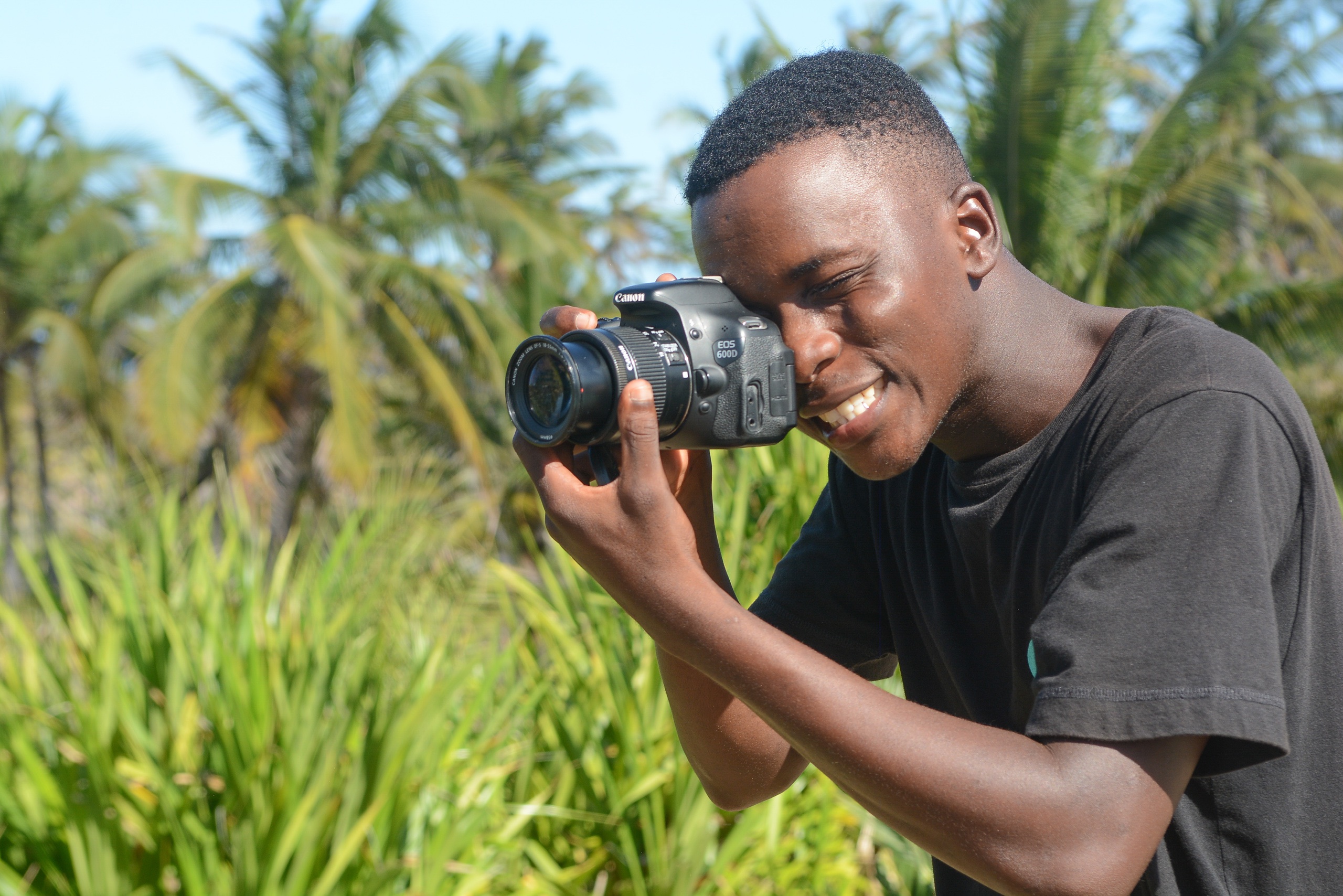
Mário Guilamba is the group’s in-country storyteller. He has been creating a documentary about why gillnet fishing is unsustainable, using the local Bitonga dialect. The documentary will be aired at local football pitches, schools and churches to encourage people to move to methods that cause less harm.
Love The Oceans’ surveys show the amount of fish being caught has declined drastically in the past 20 years and plateaued at a very low level, reducing food security and adding to the urgency for conservation.
Understanding why that is happening, and making the link to fishing practices that are unsustainable, is not always easy. “Sometimes, it’s been very difficult for [fishers] to really understand. They think we’re lying – that is, we’re preventing them from fishing,” says Guilamba. “Storytelling can change the mentality of the community, since not everyone has the chance to go out to sea, to see what’s going on.”
On the economic front, the organisation is working to create demand for sustainable, kayak-caught fish through partnerships with local resorts.
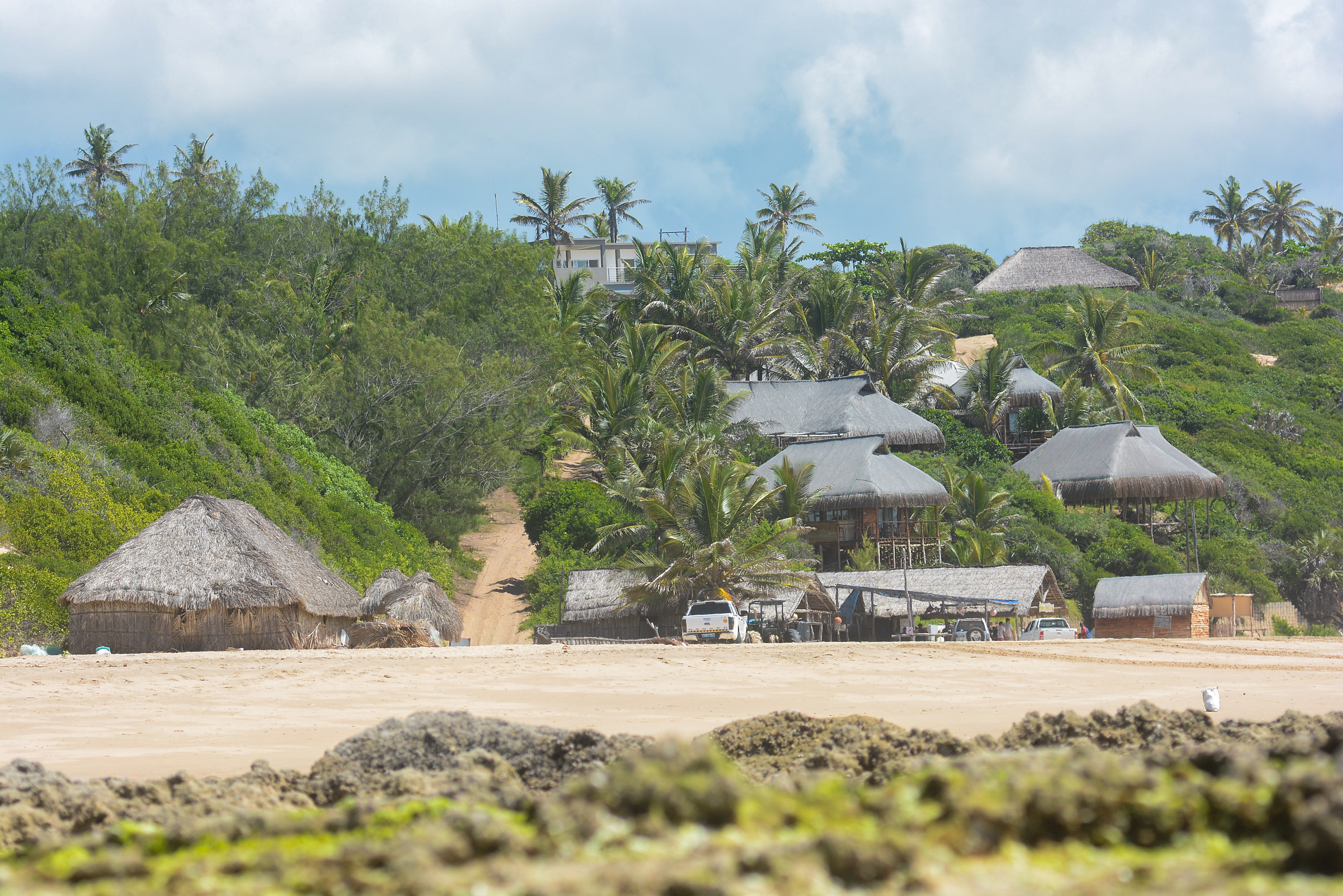
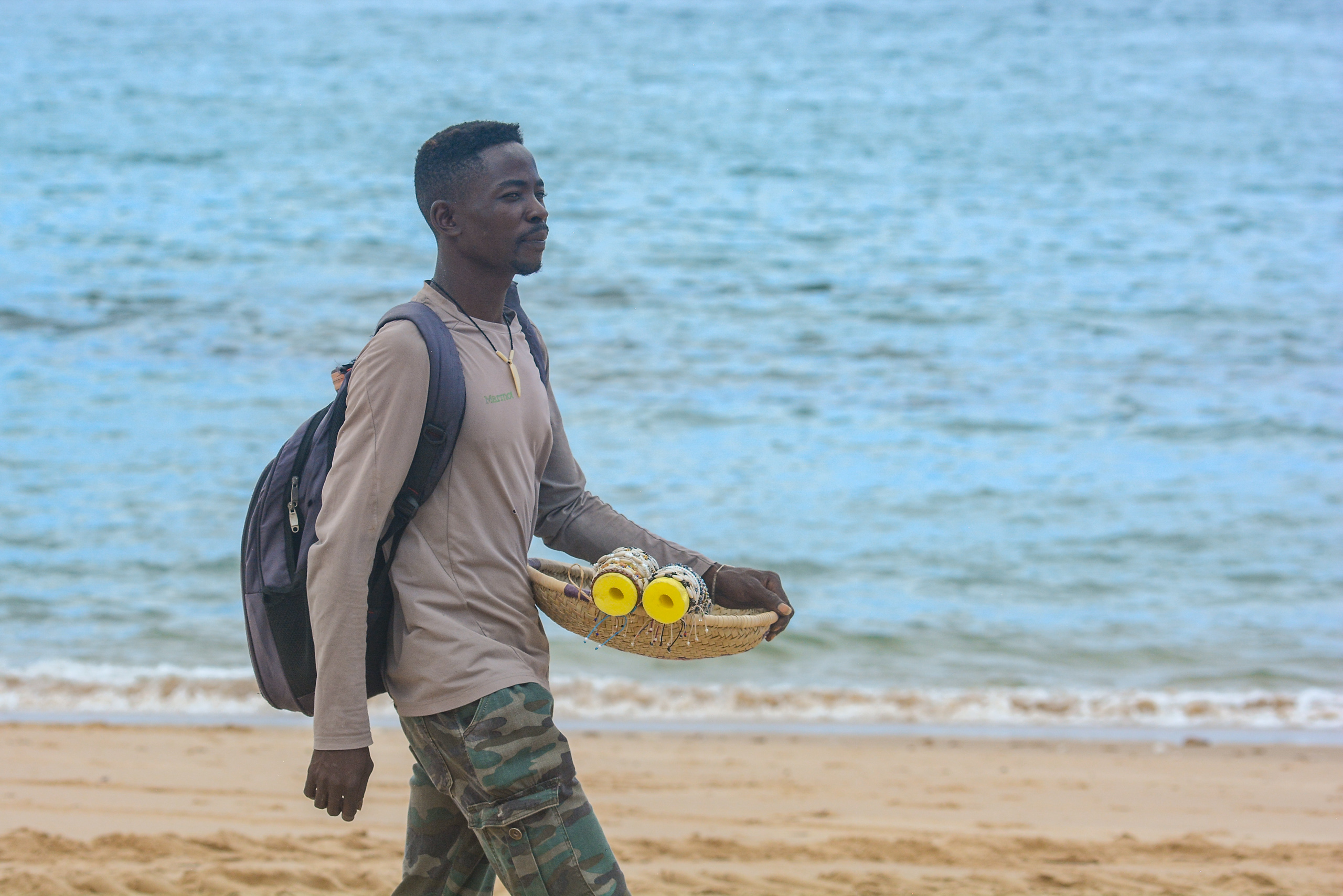

Challenges and triumphs
As many conservation groups find, funding threatens the long-term prospects of this work.
“One of the biggest challenges that we face is that funding for marine conservation is actually highly competitive,” says Ines Costa, Love The Oceans’ partnerships manager.
The difficulties that small, grassroots organisations face are compounded by short-term funding cycles, global economic uncertainties and the challenge of finding ethical donors, she adds.
Despite these hurdles, Love The Oceans has made significant strides, notably on the issue that first drew Trotman to the area: the protection of elasmobranchs (sharks, rays and some other cartilaginous fish).
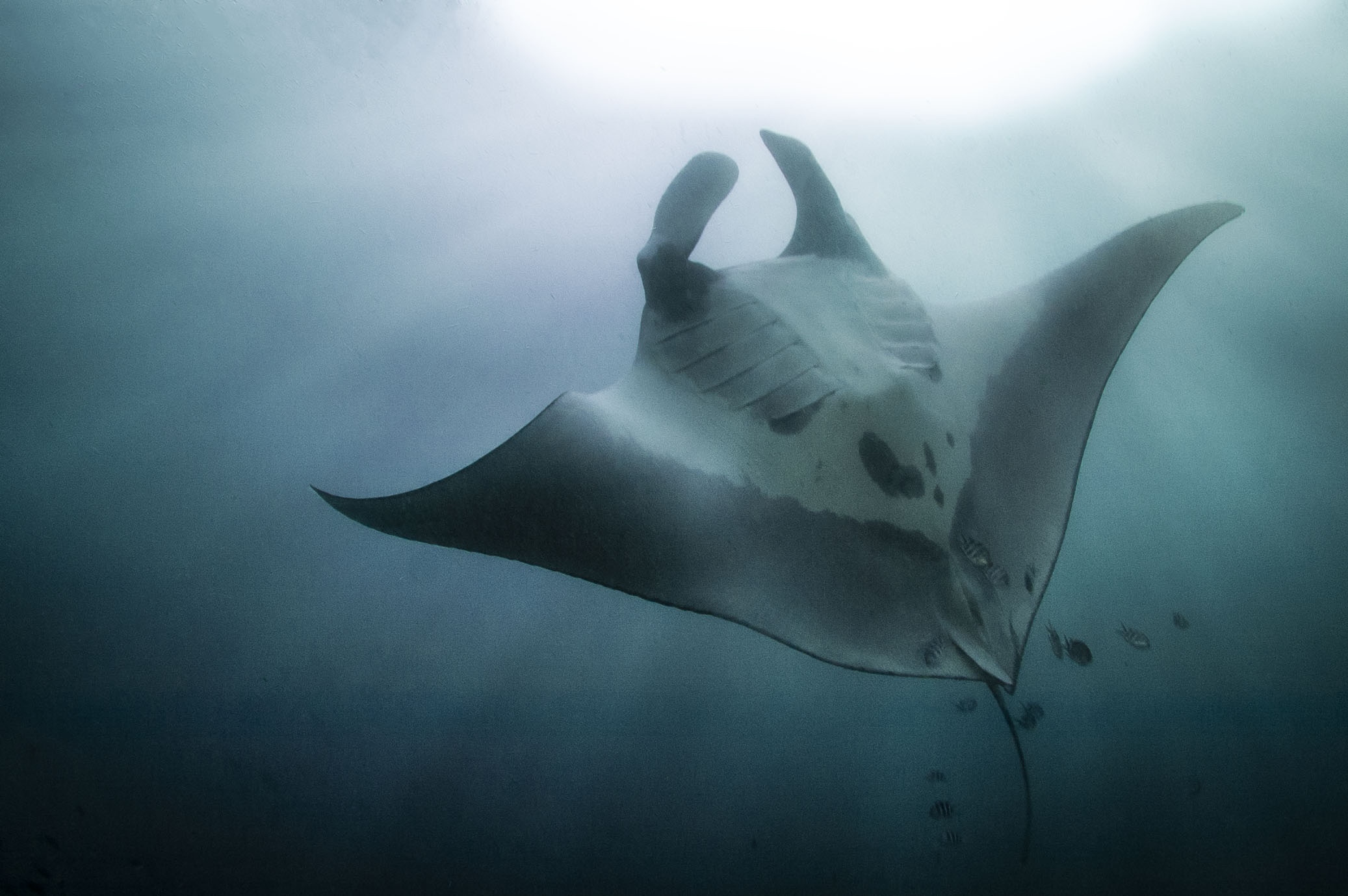
“Elasmobranchs are incredibly important here,” says Lena Pollett, the organisation’s marine programme coordinator. “They regulate fish populations and maintain balance throughout the food chain, right down to the primary producers like coral reefs.”
Pollett explains that some elasmobranchs also help control plankton blooms, which can smother coral reefs by blocking light penetration: “Manta rays and whale sharks feed on zooplankton. And when they come inland to coral reef areas, they fertilise the reefs through their faeces. It’s like using cow manure to fertilise a garden.”
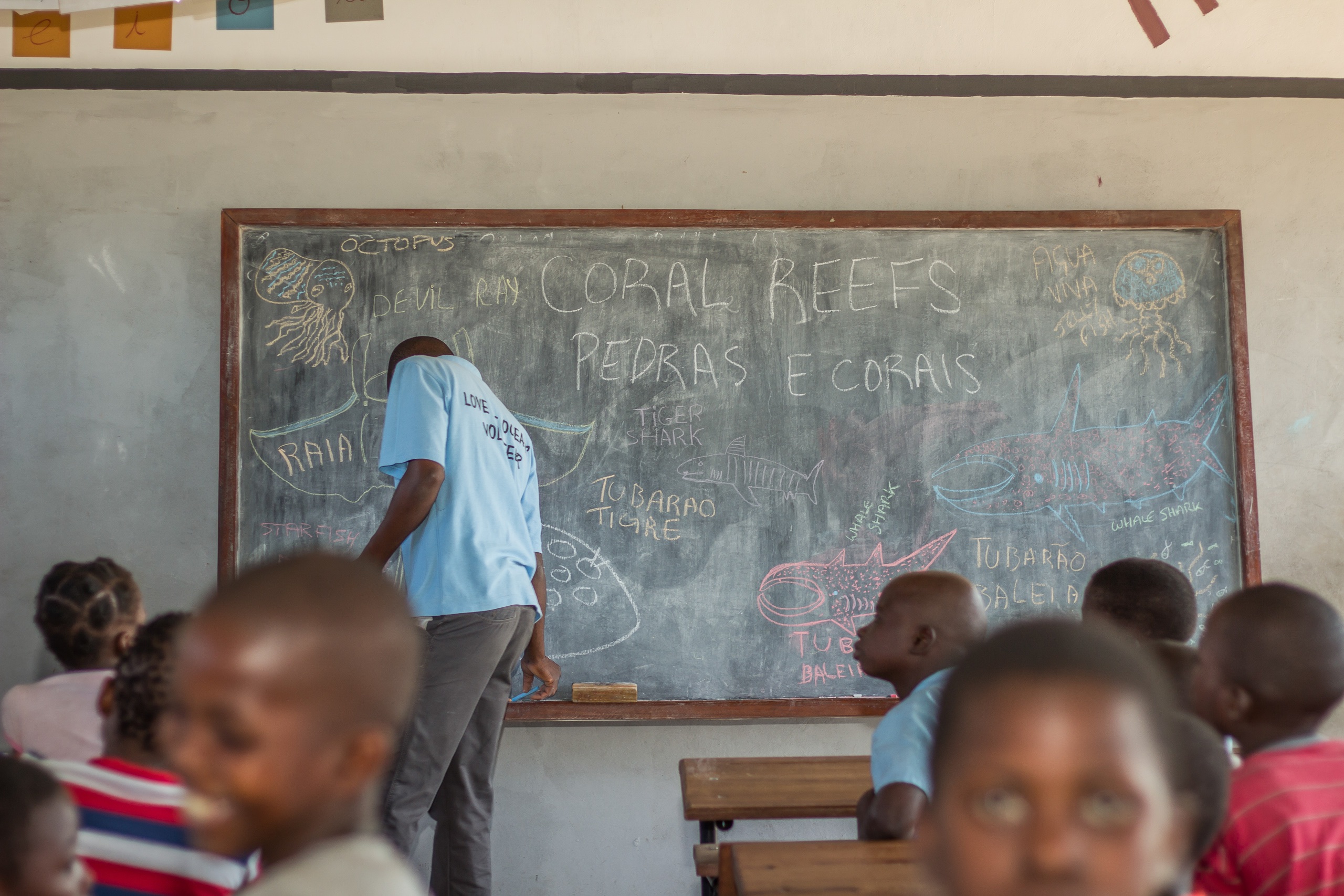

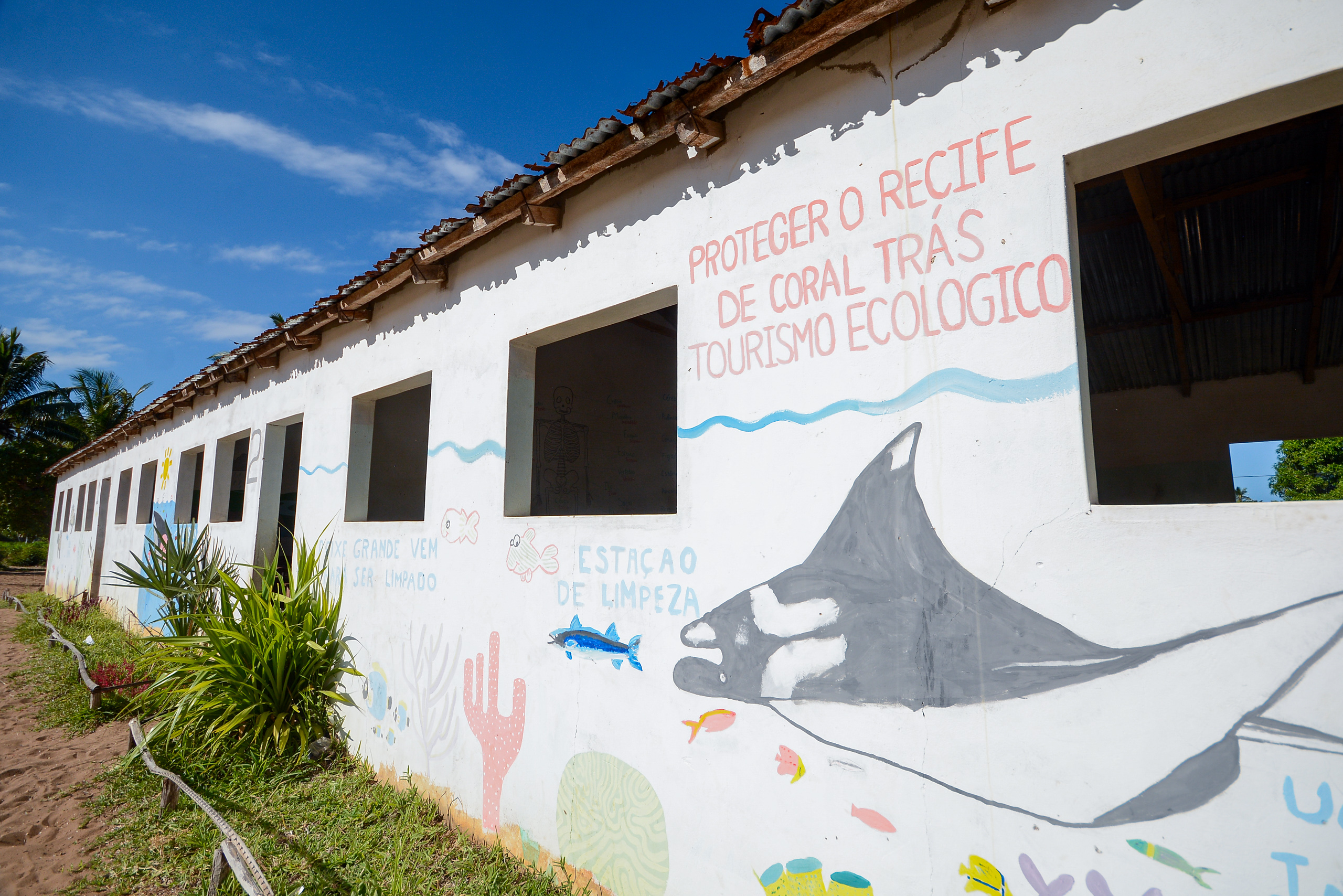
To protect these animals, Love The Oceans has launched multiple initiatives, including educational workshops and fisheries monitoring. The latter uses cutting-edge technology, like baited remote underwater video systems and drones. With this, the group collects data that can support the management and protection of sharks in the area. Trotman intends to publish this data soon as part of her PhD.
The group is also working on the critical issue of coral reef health. Pollett says a 2023 study by her team identified 437 cases of coral disease across 387 coral colonies in the bay. The organisation is now working to monitor coral health and create interventions to slow disease spread and increase coral cover.
“We’ve identified a few different threats exacerbating the disease, primarily climate change and overfishing,” Pollett explains. “It’s a complex issue, but we’re committed to finding solutions.”
Protecting the bay
A typical day for the team might begin before sunrise, gathering at 5:30am to head to a fishing landing site. There, they wait for fishers to return with their catch, help to haul the boats ashore, then measure and photograph the fish. The work often stretches into the afternoon, after which the team returns to their base to log the data.
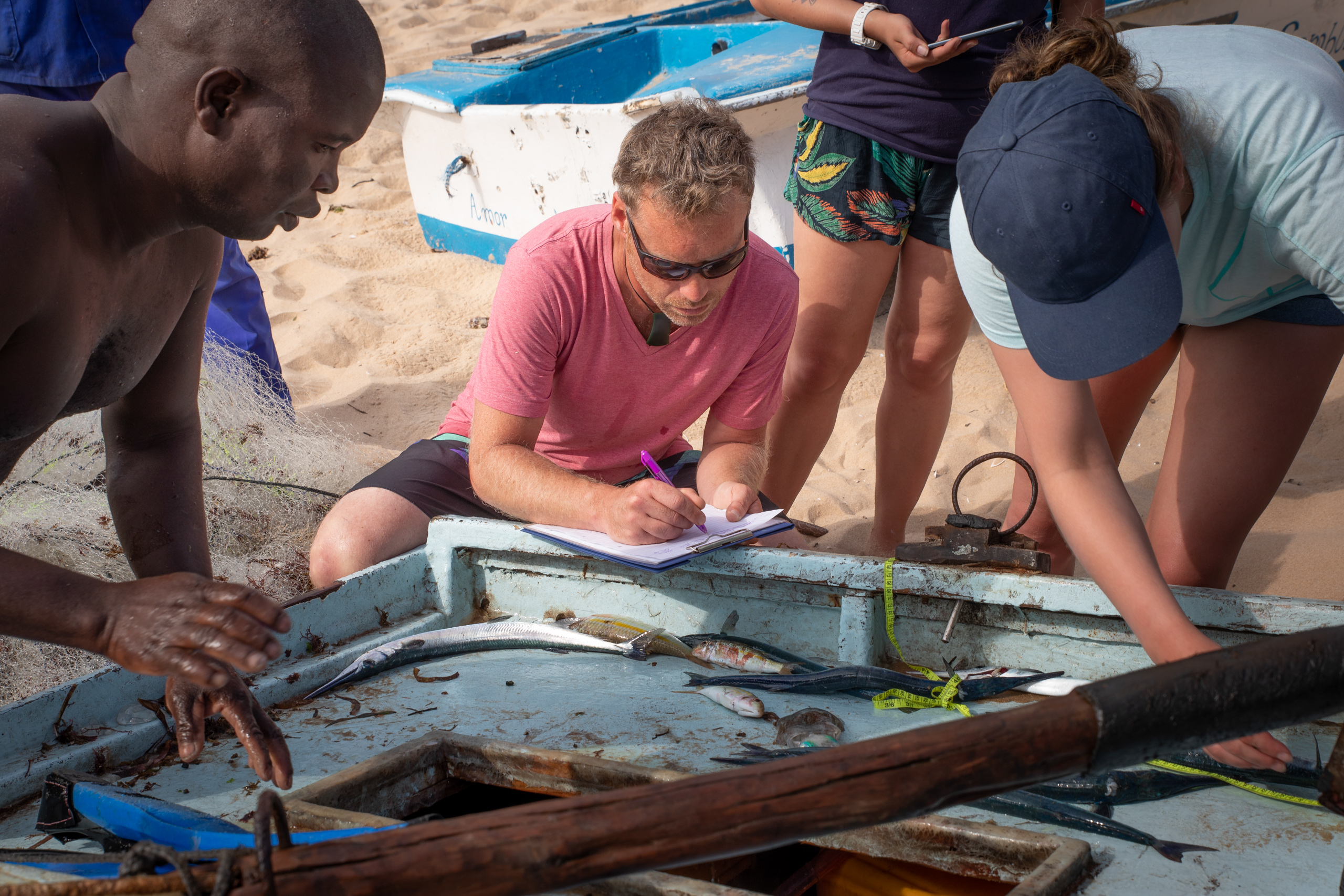
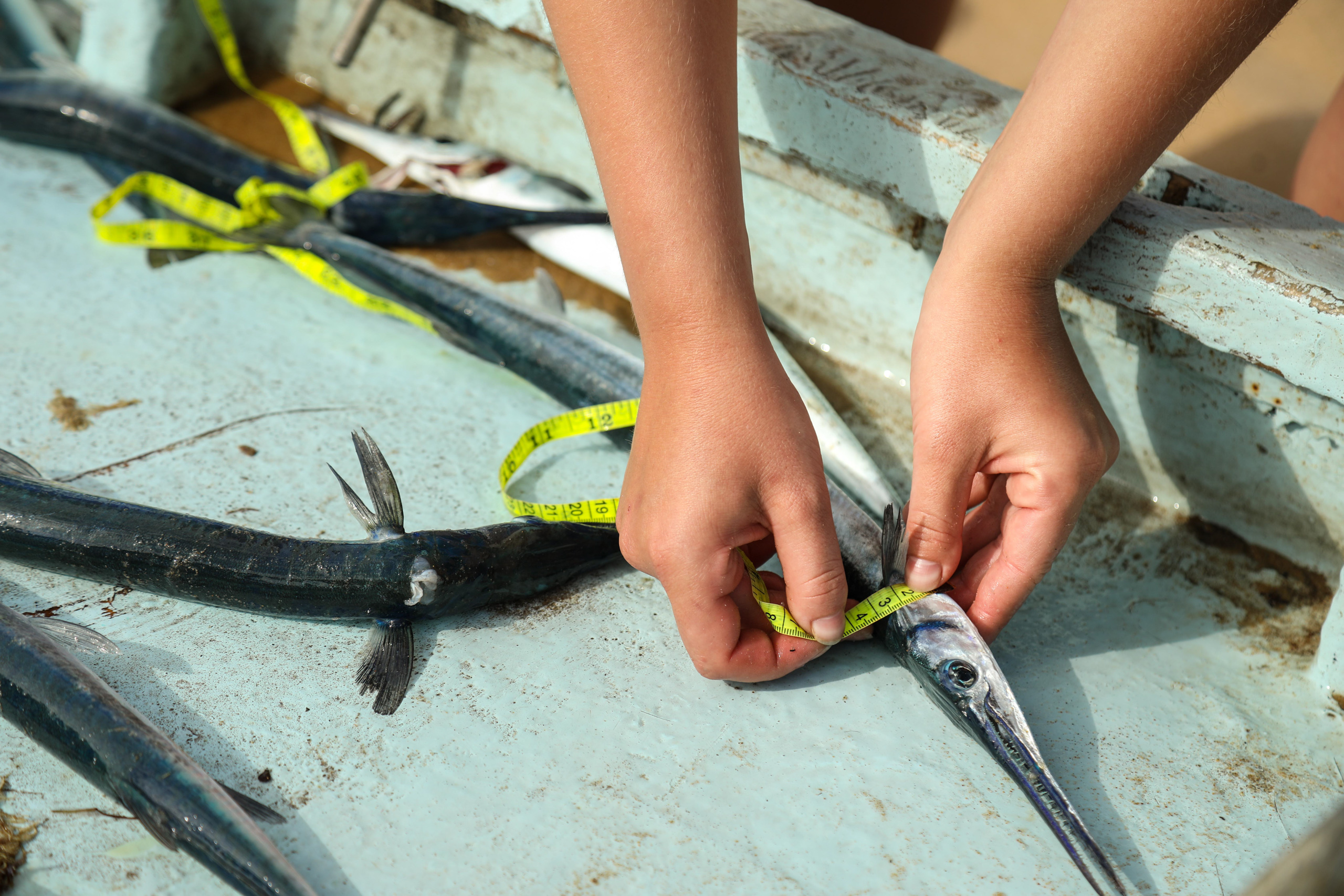
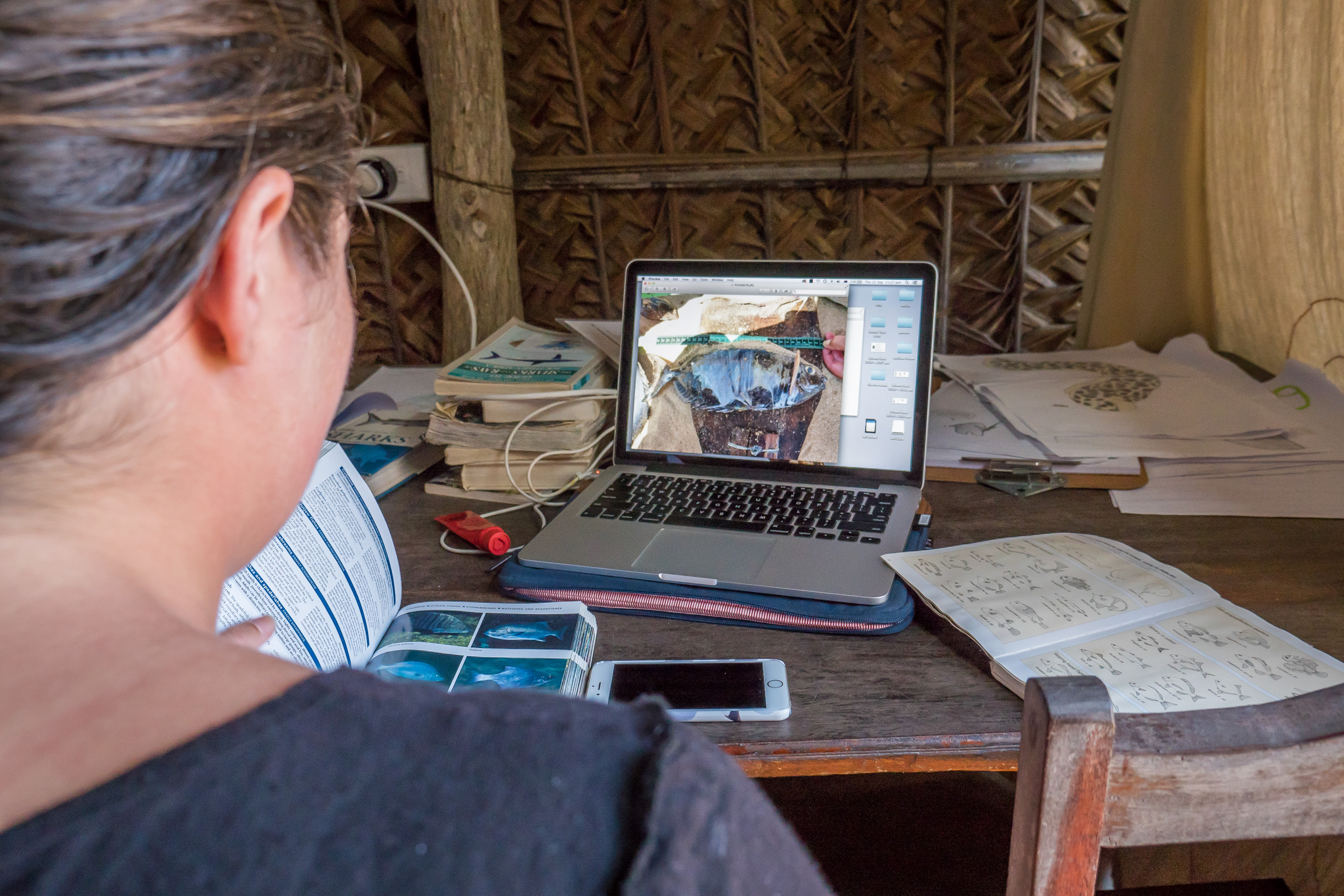
Other days are spent beneath the waves. On these occasions, the team gathers at 7am at the dive centre, kitting up for a dive. After sailing out, they descend to conduct coral reef surveys, which involves recording data on the health and diversity of reefs along transects – lines placed across habitats to study changes in species and environment. These boat days are often combined with baited remote underwater video deployments to monitor carnivore presence as an indicator of ecosystem health. Back on land, the afternoon is dedicated to data logging.
When the weather permits, the focus shifts to the majestic humpback whales that frequent the bay. The team takes to the water or the dunes with binoculars, or the sky with a drone, to observe the presence of large animals such as whales. On other occasions, they deploy hydrophones that capture the underwater vocalisations of these ocean giants – adding another layer of data to their growing repository and assisting in population studies of these animals.
Chunguane stresses the importance of responsible fieldwork and robust science, for which the team observes the “three T” rules: “We have a policy of ‘don’t take, don’t tease and don’t touch’ to minimise disruption to the ecosystem.”
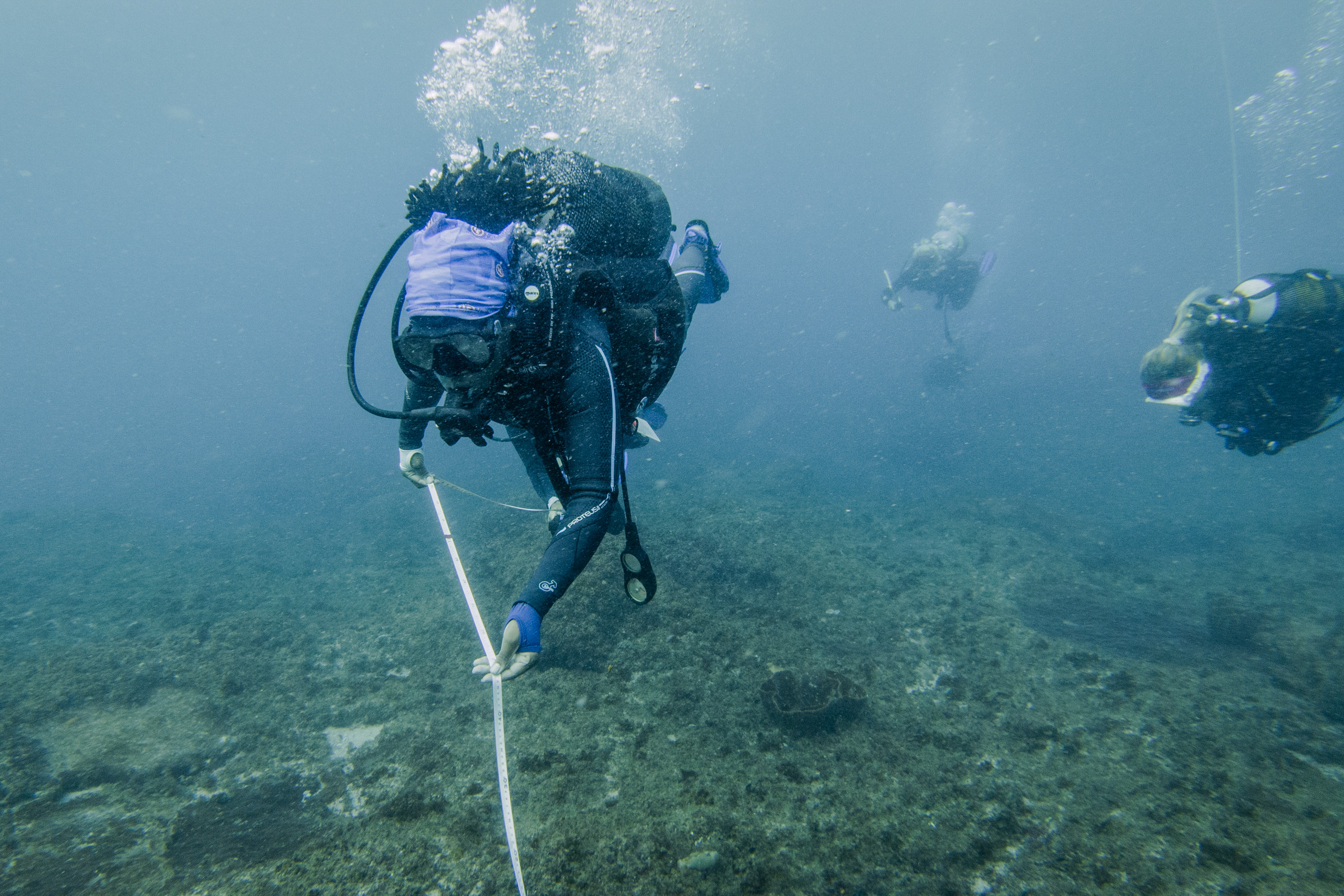
This data collection contributes to the overarching goal of establishing a marine protected area (MPA) in Jangamo Bay. MPAs are designated sections of the ocean where human activity is more strictly managed to protect biodiversity, restore fish populations and support sustainable livelihoods. “Right now, there’s no official protection in the area,” explains Trotman.
The goal for Jangamo Bay is to combine legal protection with community-led conservation and science-based management, co-managed by Love The Oceans and the local community. However, Trotman is under no illusions that legal status alone will safeguard the fragile marine ecosystem: “A marine protected area is actually only as good as its management. If the mechanisms aren’t in place for the management of the marine protected area, then a marine protected area will not succeed.”
In other words, a legal framework is the final flourish in any effort to establish an MPA, not its foundation. “The MPA legislative rule and the actual law establishing the MPA is kind of like the cherry on top of the cake. It’s not the cake itself,” adds Trotman.
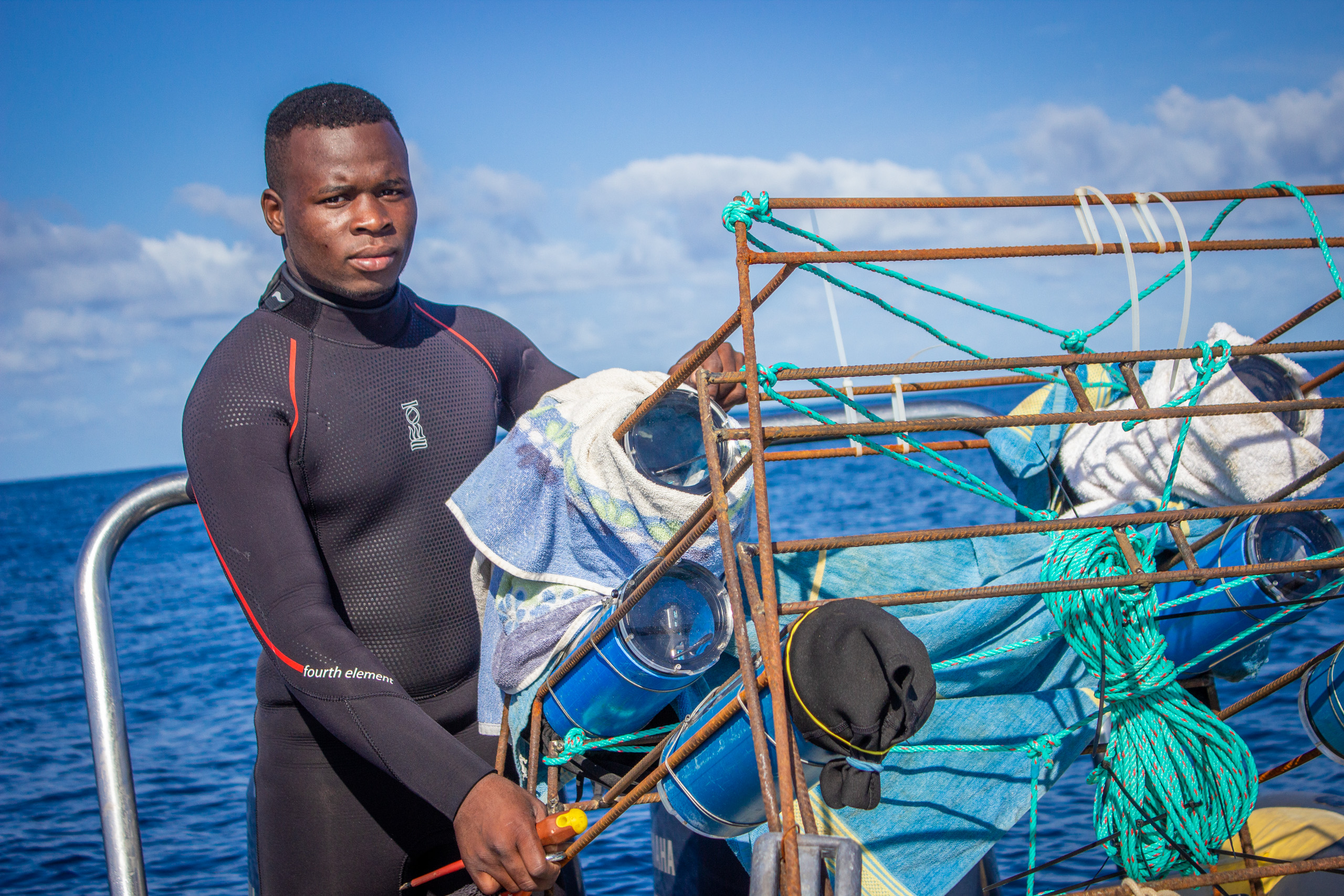
The team is working with an expected three-to-five-year timeline for official MPA recognition in Jangamo Bay. A memorandum of understanding with the government is in place, which lays the groundwork for future collaboration and a formal designation.
Trotman says law and paperwork are only part of the puzzle, however. Shifting human behaviour among fishers, local businesses and even tourists remains one of the biggest and most unpredictable challenges: “With conservation work, human behaviour change is such a humongous element, and also one of the most challenging. Humans are creatures of habit, and we don’t want to change our ways sometimes.”
Other issues, such as illegal, unreported and unregulated fishing by foreign fleets, are too big for a locally focused NGO to tackle alone. “It’s a terrifying reality of the entire coastline of Mozambique,” says Trotman. “They’re always coming way closer than they’re contracted to come and it’s widely acknowledged that often their catch is not legal. There is a lot of illegal fishing that is continuously happening along the coastline.”
While a local focus limits its ability to directly confront these large vessels, Love The Oceans is working to raise awareness and advocate for stronger regulations and enforcement. The organisation envisages a reporting system that could enable action against boats that fish illegally.
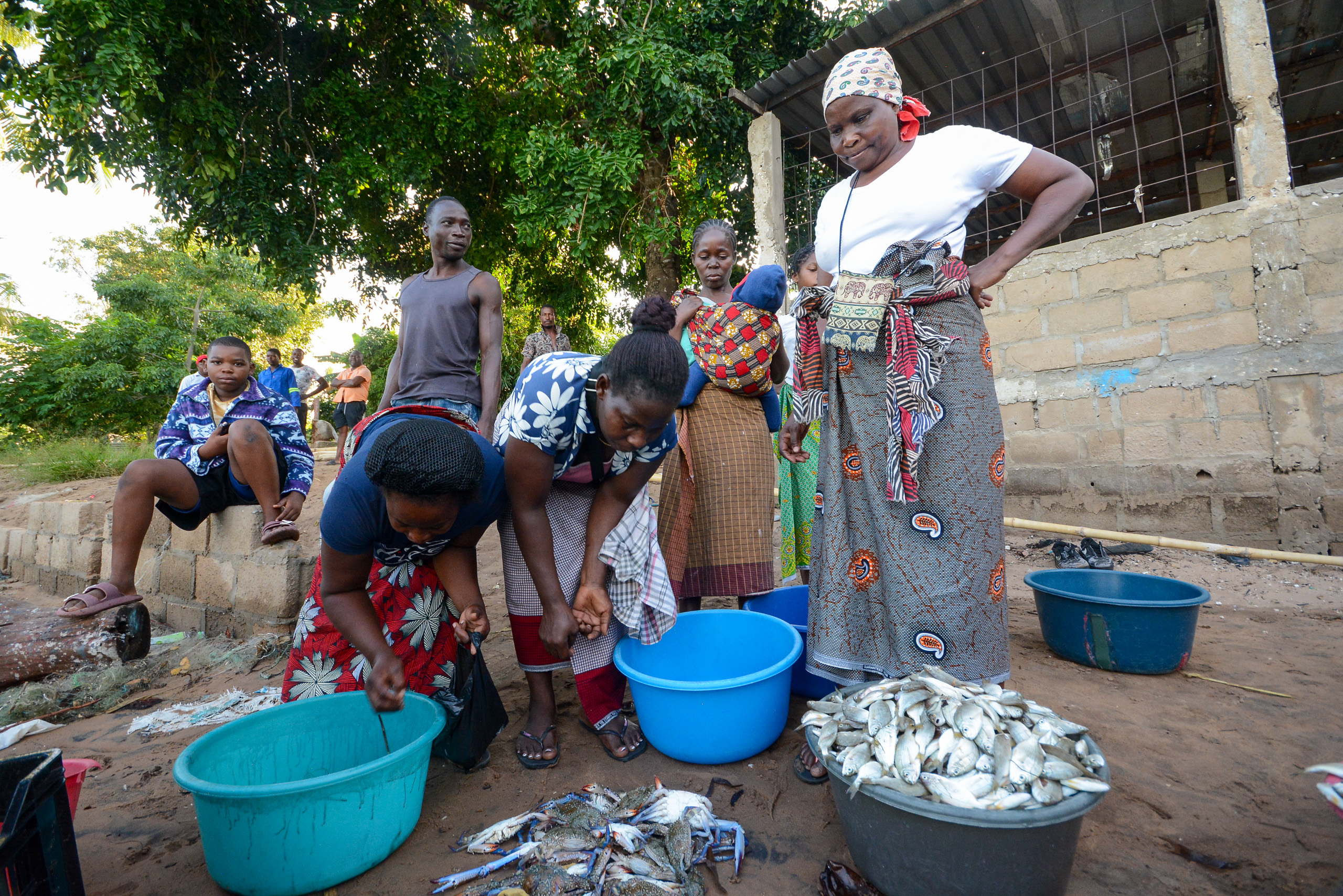
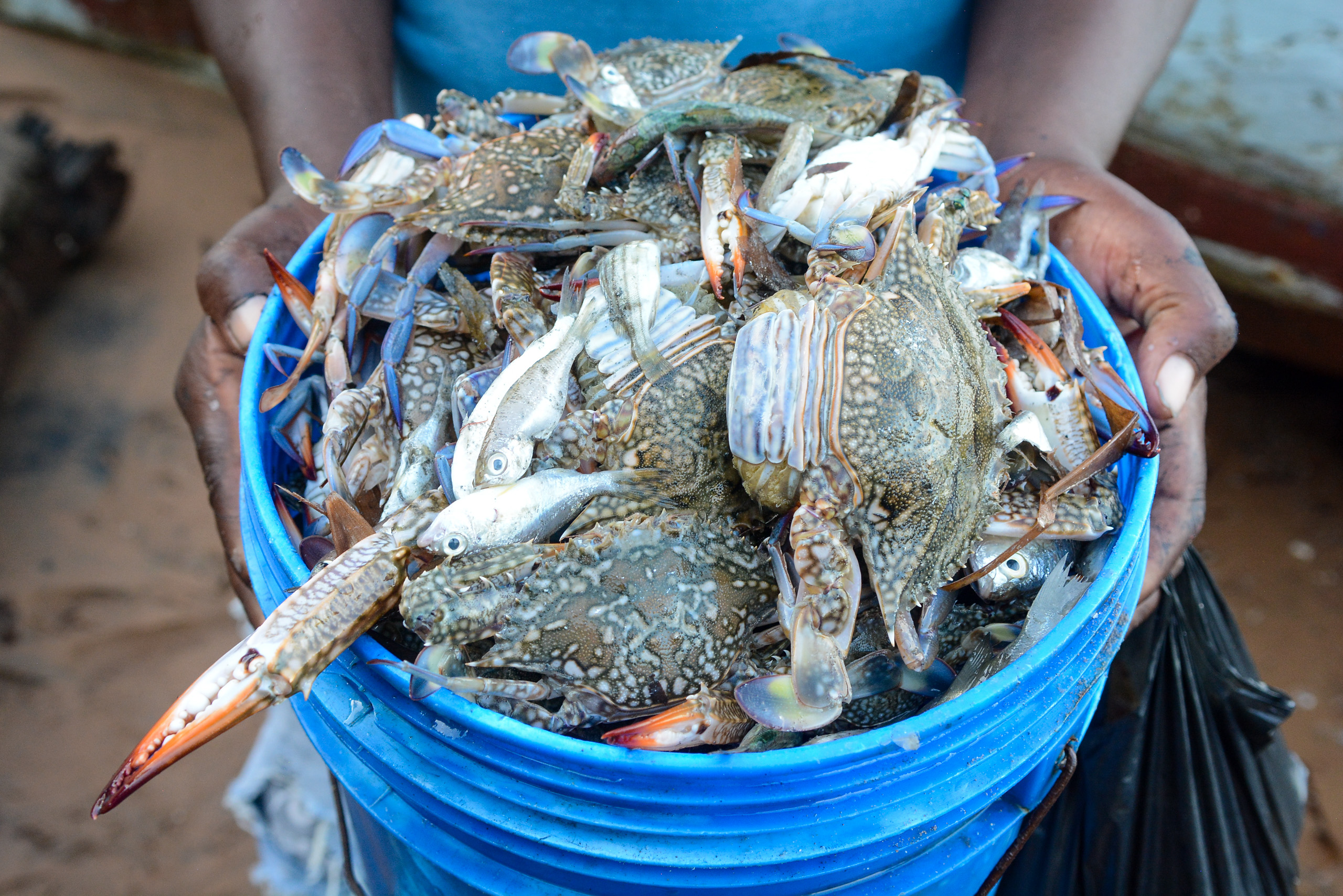
Gender equity is an ocean issue
Love The Oceans says there is a critical link between gender equity and marine conservation. “If you exclude any demographic from conservation conversations, your strategy won’t work,” says Trotman.

The organisation has launched several initiatives to provide stable income for women who are often locked out of economic opportunities. These include a mussel farming project and a scuba diving programme that opens career paths in the marine sector. So far, two women have been trained to dive, who then became ambassadors. Love The Oceans aims to recruit more.
These efforts have garnered international acclaim. In November 2024, Love The Oceans received the prestigious Gender Just Climate Solutions Award, which is an initiative of the non-profit network Women Engage for a Common Future. Trotman and Chunguane travelled to COP29 in Baku, Azerbaijan to accept the award.
“Winning the award strengthened Love The Oceans’ initiatives and projects,” says Chunguane. “Most people don’t believe that small NGOs are the ones that really do the work.”
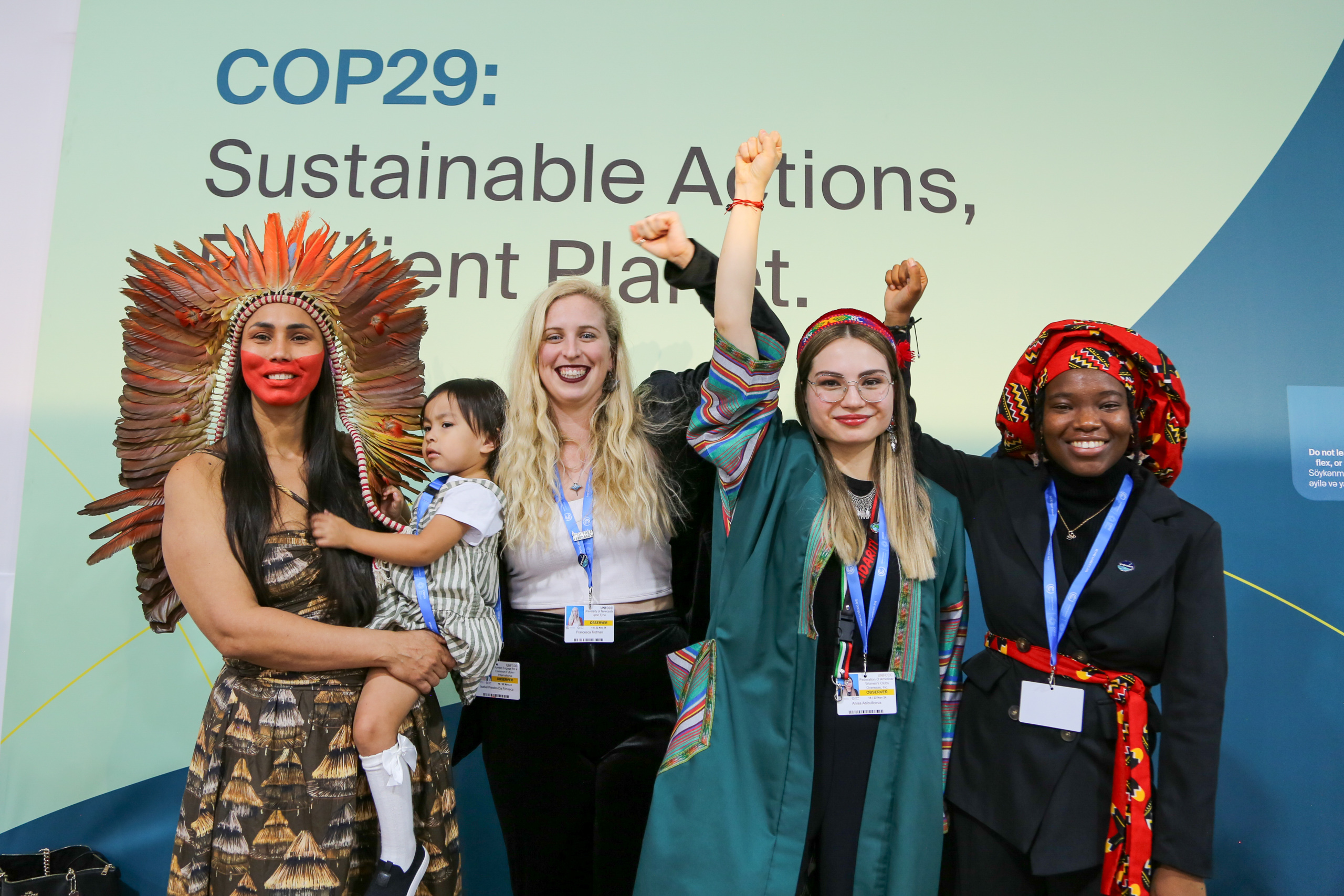
Jangamo Bay typifies Love The Ocean’s community-driven conservation model: combine cutting-edge science, education and sustainable practices to empower coastal communities, so they can take the lead in protecting their marine resources. “It’s all about fostering a sense of ownership and encouraging sustainable practices for generations to come,” says Pollett. “This is the ultimate goal.”
Additional reporting by Carlos Uqueio.
